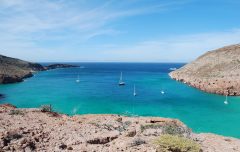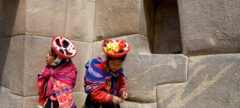The Inca Trail: an Insider’s Guide

‘What are we doing? Is it all worth it?’ is the usual question gasped out by trekkers stumbling like drunks towards Dead Woman’s Pass on the second day of the Inca Trail.
The answer is resolutely, absolutely and completely ‘yes’. The Inca Trail is the awesome Andean trek with a serious reward at the end: the magical, lost city of Machu Picchu.
You won’t be the first to discover the ruins at the end of the trek though. Since American explorer Hiram Bingham brought Machu Picchu to the world’s attention one hundred years ago, something the Spanish conquistadors were never able to do centuries earlier, travellers and trekkers have been following in his footsteps in a bid to see the Inca citadel for themselves.
The Inca empire was centred on Peru but stretched further than that of the Romans. Like the Romans, the Incas left behind them monumental stone constructions, built for the most part without mortar, yet strong enough to withstand centuries of earthquakes that have toppled more modern buildings. Dating from the mid-fifteenth century, Machu Picchu, the Inca’s crowning achievement, is now one of the world’s archaeological and architectural icons. The image of the ruins straddling the saddle of a high mountain is instantly recognisable, making it hard to believe that as little as a century ago only a tiny handful of farmers and traders operating in the remote Lower Urubamba region of southern Peru knew of its existence.
On 24 July 1911, Bingham was led to Machu Picchu whilst searching for Vilcabamba, the rebel Inca’s final stronghold. Following its 'scientific discovery', Machu Picchu has become rightly recognised as a masterpiece of Inca engineering and design, boasting incomparable, intricately carved and close-fitting masonry, which Bingham described as being ‘as fine as the finest stonework in the world’. An intact site of several hundred structures built from these gracefully sculpted blocks, unknown to the outside world and hidden amidst spectacular granite pinnacles, Machu Picchu is the archetype of lost cities. It is at once breathtaking to behold and utterly mysterious.
But what of the Inca Trail? Again, like the Romans, the Incas left behind them one of the most extensive road networks in the ancient world, for the most part paved and drained, which linked every part of their realm. Many of these tracks have been rediscovered. The classic Inca Trail, penetrating the forest above the Urubamba River, is the best such example.
In the days of the Incas, Machu Picchu was a long, hard walk from Cusco. However, because these days you can reach the site without ever having to lace up a pair of trekking boots in earnest, why walk there? There must be something intrinsically appealing about the Inca Trail itself to justify trekking four days through tough terrain, over three passes of not inconsiderable altitude just to get somewhere you can catch the train to in only four hours?
A lot of talk before tackling the Inca Trail is on the goal and the ruins waiting at the far end. But in this instance, the journey really is part of the adventure and the reason to go. Disembarking at a stop without even a station, you are instantly immersed in the landscape. The trek passes some stunning scenery, rich in flora and boasting awesome panoramas and dramatic views of snow-capped summits. Drag your eyes from the horizon and admire what’s under your feet though; the entire trail is an extraordinary feat of Inca design, featuring carefully fitted jointed paving and even a tunnel carved through solid granite. Then there are the ruins along its entire length. All spectacularly and superbly sited, they seem to have simply grown out of the ground.
In truth, there are a multitude of reasons to tackle the trek. Although day-trippers can explore and appreciate Machu Picchu’s features, finely honed walls and carefully sculpted structures, they only experience the final instalment of a much longer story. In a trek full of literal and metaphorical highpoints, Machu Picchu is the last in a succession of celebrated features. As gripping as the finale is, it’s only part of the tale. To walk the Inca Trail is to uncover the rest of the engrossing story.
 This article was written by Alexander Stewart, author of The Inca Trail, Cusco & Machu Picchu, fully revised new edition (published by Trailblazer) available to buy online.
This article was written by Alexander Stewart, author of The Inca Trail, Cusco & Machu Picchu, fully revised new edition (published by Trailblazer) available to buy online.
Tailor-made holidays
Flexible, custom-made holidays to Latin America created to match your exact requirements: our tailor-made itineraries are as unique as the clients for whom they are designed.
Design my tripPapagaio
Your edit for Latin American inspiration
Our exciting range of articles on Latin America explore everything from iconic destinations and lesser-known cultural gems to delicious traditional recipes. You’ll also find exclusive travel tips, first-hand client reviews and the chance to get your personal questions answered by our travel experts.
View Extraordinary Inspiration






































